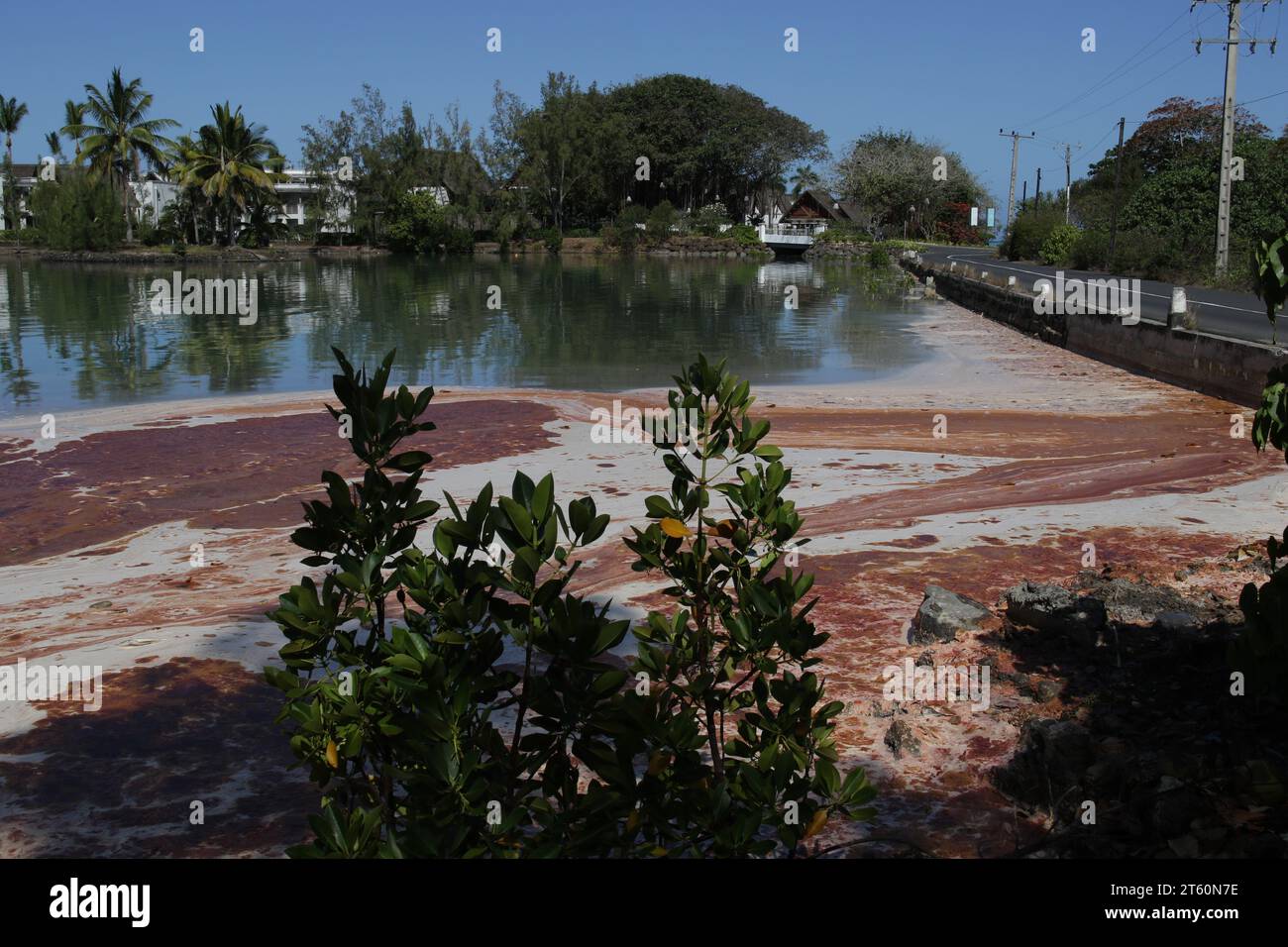Like every year at this time, the reproduction of corals in the Blue Bay-Pointe d'Esny-Mahébourg region offers a beautiful spectacle.

Image details
Contributor:
alberto / Alamy Stock PhotoImage ID:
2T60N7EFile size:
57.1 MB (2.2 MB Compressed download)Releases:
Model - no | Property - noDo I need a release?Dimensions:
5472 x 3648 px | 46.3 x 30.9 cm | 18.2 x 12.2 inches | 300dpiDate taken:
31 October 2023Location:
Pointe d Esny, Mahebourg.More information:
“We place pieces of marble underwater in the affected areas and follow up. You need special light to be able to observe them. In some places, we notice, in fact, that there are larvae which have clung and in others, there are none. But I believe that it is already a positive sign that we have them on certain sites, ” he declares.The pink or red sea visible until the end of November Like every year at this time, the reproduction of corals in the Blue Bay-Pointe d’Esny-Mahébourg region offers a beautiful spectacle. The sea takes on a pink or red hue which dominates the azure blue. This phenomenon will be visible until the end of November. Those who have passed through Blue Bay and its surrounding areas in recent weeks have undoubtedly noticed that in certain places, the sea has changed color. This is not pollution, but a natural phenomenon that occurs once or twice a year. Vinayagen Munusami, Scientific Officer at Eco-Sud, explains: “During the reproductive period, male polyps release gametes, that is to say sperm, and female polyps release eggs. When the two meet in water, fertilization occurs. When the sea turns red, it means that fertilization has already taken place." In Mauritius, the phenomenon is especially visible in the South-East region, particularly in Blue-Bay, with the marine park, but also in Pointe-d'Esny and Mahébourg, on the seafront side. also in other areas but are not visible due to the current.” Once fertilization is complete, a larva is formed. It will continue its journey in the water, until it clings to a support to grow. With pollution and global warming, can we ensure that they survive?